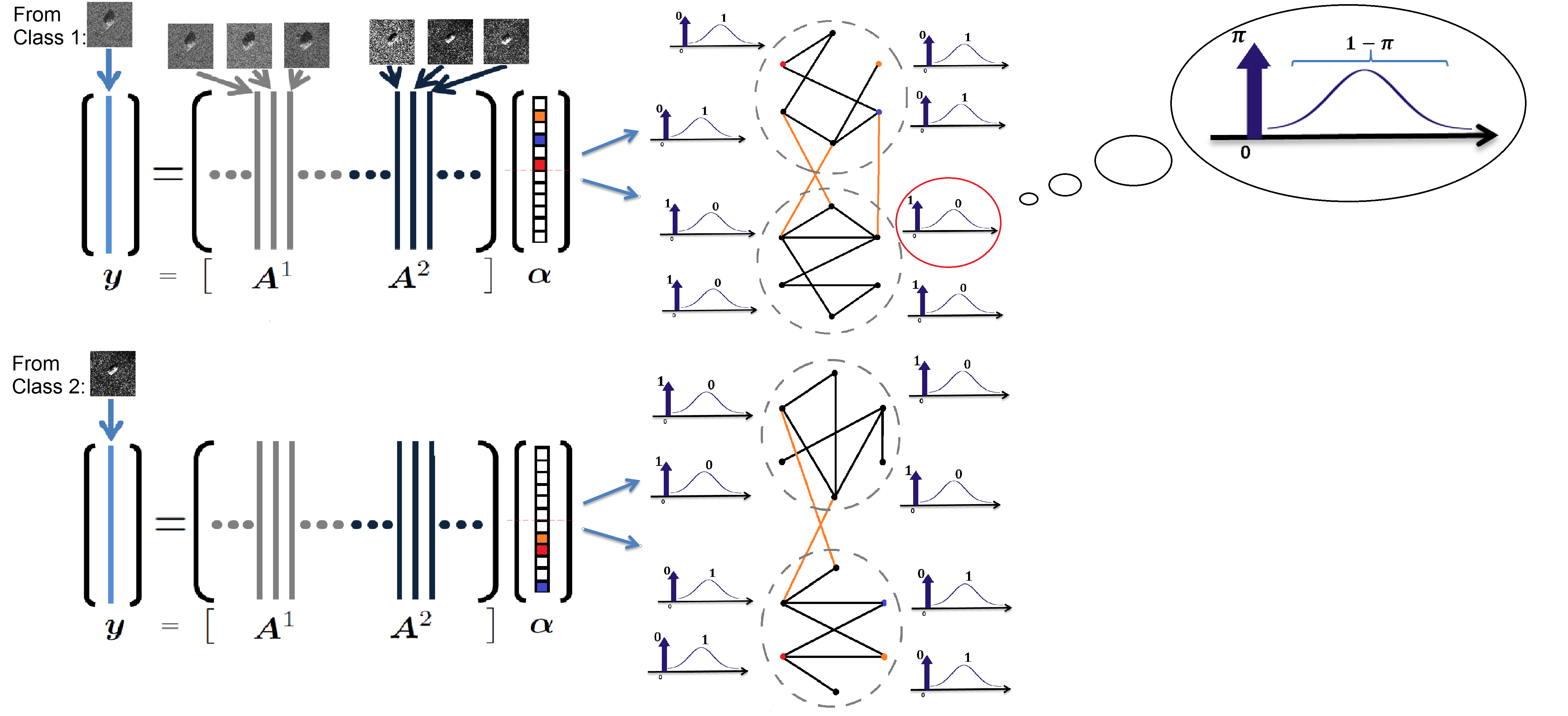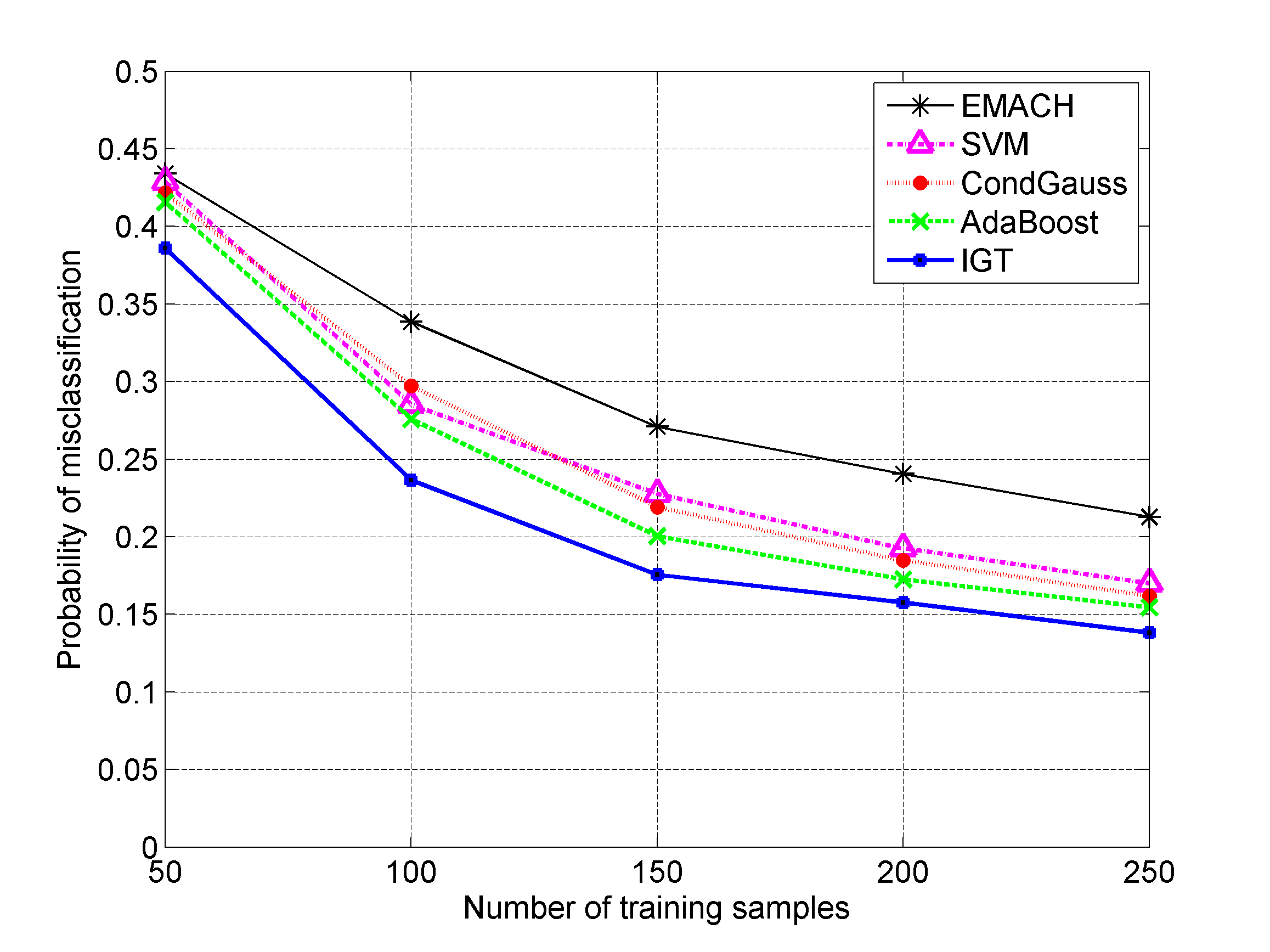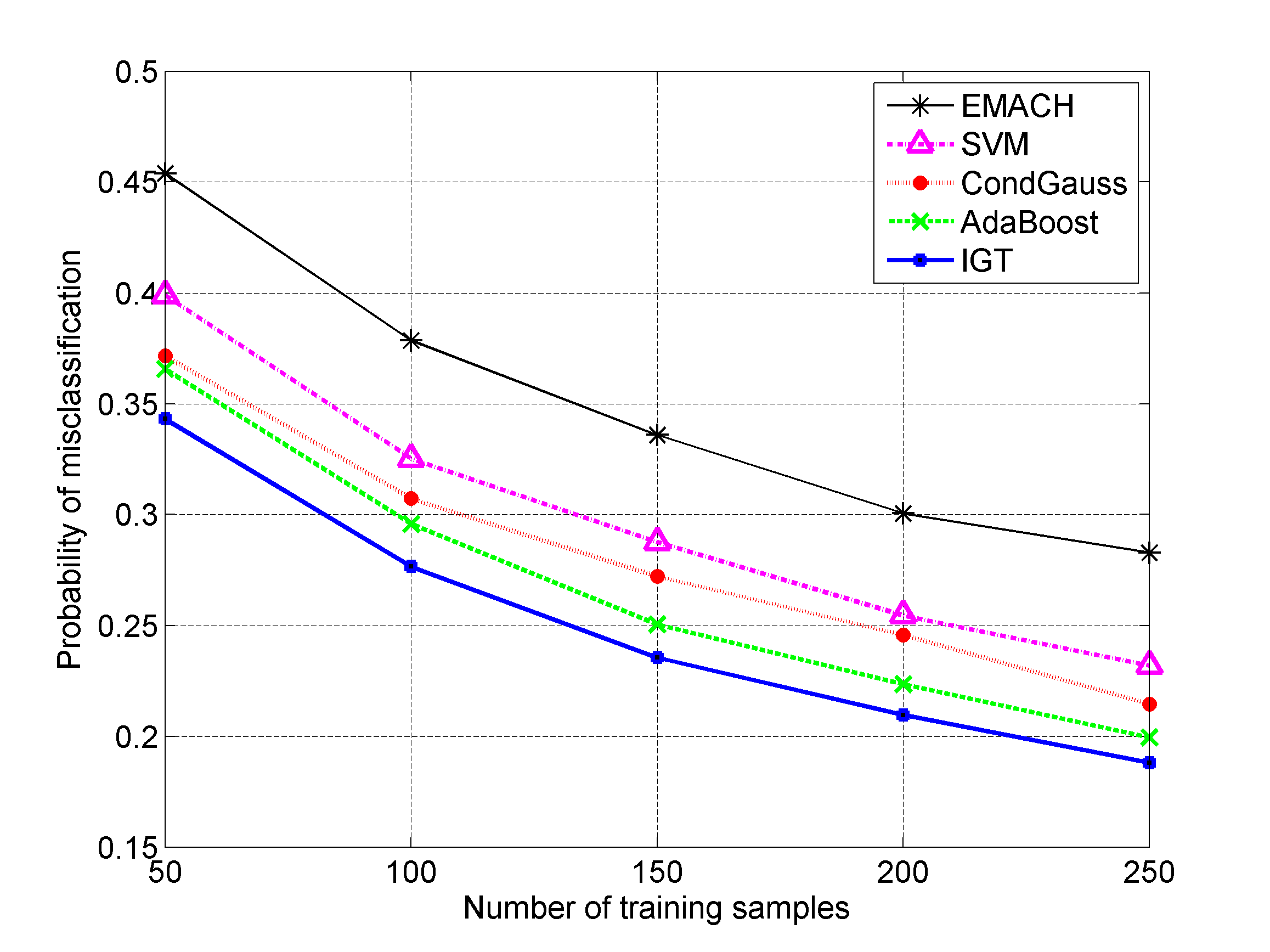Database
 MSTAR benchmark - Example images of MSTAR database.
MSTAR benchmark - Example images of MSTAR database.
Sparse Representation-based Classification

Sparse representation-based classification using spike-and-slab priors. Shown in the figure are two classes of SAR images.

 |
 |
Classification error vs. training sample size. Proposed IGT method is compared with EMACH filter [1], SVM [2], conditionally Gaussian model [3], and AdaBoost method [4]. (Left) EOC-1. (Right) EOC-2.
Related Publications
Vu H, Tiep, Nguyen L H, and Vishal Monga. "Classifying Multichannel UWB SAR Imagery via Tensor Sparsity Learning Techniques." IEEE Transactions on Aerospace and Electronic Systems 55.4 (2019): 1712-1724.
Srinivas, Umamahesh, Vishal Monga, and Raghu G. Raj. "SAR automatic target recognition using discriminative graphical models." IEEE transactions on aerospace and electronic systems 50.1 (2014): 591-606.
Srinivas, Umamahesh, et al. "Exploiting sparsity in hyperspectral image classification via graphical models." IEEE Geoscience and Remote Sensing Letters 10.3 (2013): 505-509.
Srinivas, Umamahesh, et al. "Discriminative graphical models for sparsity-based hyperspectral target detection." Geoscience and Remote Sensing Symposium (IGARSS), 2012 IEEE International. IEEE, 2012.
Srinivas, Umamahesh, et al. "Structured sparse priors for image classification." IEEE Transactions on Image Processing 24.6 (2015): 1763-1776.
Selected References
Singh, R. and Kumar, B. V. Performance of the extended maximum average correlation height (EMACH) filter and the polynomial distance classifier correlation filter (PDCCF) for multi-class SAR detection and classification. Proceedings of SPIE, vol. 4727, Algorithms for Synthetic Aperture Radar Imagery IX, 2002, pp. 265–276
Zhao, Q. and Principe, J. Support vector machines for SAR automatic target recognition. IEEE Transactions on Aerospace and Electronic Systems, 37, 2 (Apr. 2001), 643–654.
O’Sullivan, J. A. et al. SAR ATR performance using a conditionally Gaussian model. IEEE Transactions on Aerospace and Electronic Systems, 37, 1 (2001), 91–108.
Sun, Y. et al. Adaptive boosting for SAR automatic target recognition. IEEE Transactions on Aerospace and Electronic Systems, 43, 1 (Jan. 2007), 112–125.